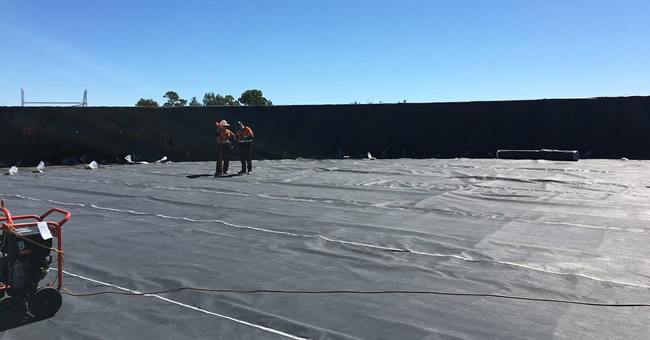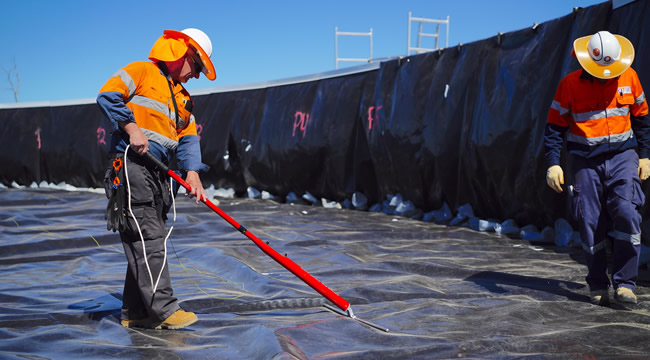A coal seam gas facility in Australia has become the site of the world’s second commercial-scale use of graphene-enhanced geotextiles. The product utilizes Imagine Intelligent Materials’ imgne® X3 coating, which is applied to Geofabrics Australasia’s bidim C geotextile.
The Queensland CSG operation installed 10,000 m2 of the graphene-enhanced geotextile, which enables the the detection of holes in a lining system as small as 0.7 mm (using standard electrical leak location methodologies).

Graphene-enhanced geotextiles allow pit and pond lining system integrity to be verified quickly and to a high degree. This keeps sites in environmental compliance and establishes optimal performance for the CSG site.
GRAPHENE-ENHANCED GEOTEXTILES IN CONTAINMENT APPLICATIONS
“These CSG installations validate our ability to deliver solutions for civil engineering and infrastructure,” said Imagine IM CEO Chris Gilbey. “Geosynthetic materials are a key component of all infrastructure … and mining, waste, and water management represent a major market opportunity.”

Imagine IM is one of a handful of companies globally that has established paths to market for graphene. The company established Australia’s first commercial graphene manufacturing plant, which has a capacity to produce over 10 tonnes of graphene per year.
“[The geosynthetic] installers told us that they were impressed by both the efficiency of the product and the ease of installation,” Gilbey said.
In a sign of things to come, the company also noted that purchase orders for imgne® X3-coated geotextiles will involved another 100,000 m2 of geotextiles.
“This is an important first step toward delivering our vision of graphene-enabled smart materials that can report changes in stress, temperature, and moisture in real-time,” said Gilbey. “Our vision is for our solutions to be a valuable component of both manufacturing and infrastructure in the future.”
Imagine IM licenses, certifies, and manufactures graphene-based solutions for specific applications. The company is a lead research partner with Swinburne University to study graphene throughout supply chains.
Learn more about graphene-enhanced materials at www.imgne.com.











